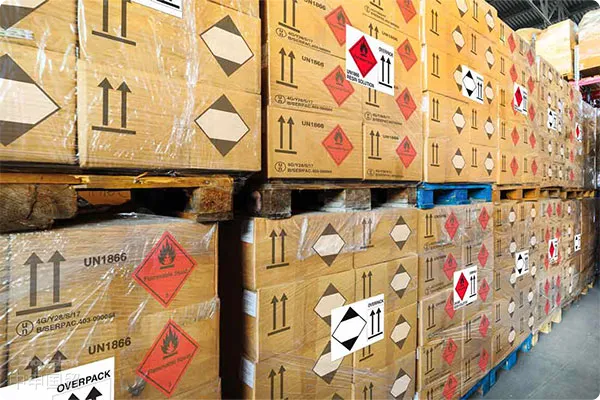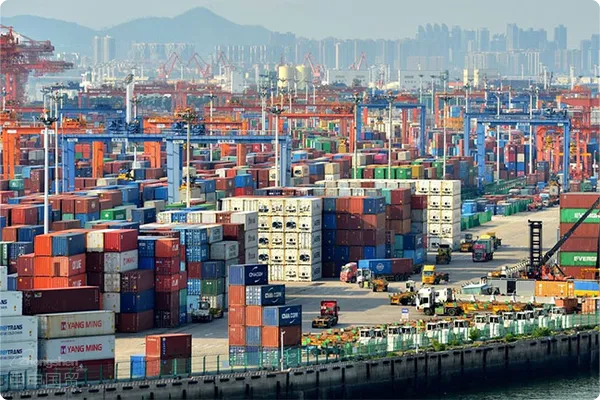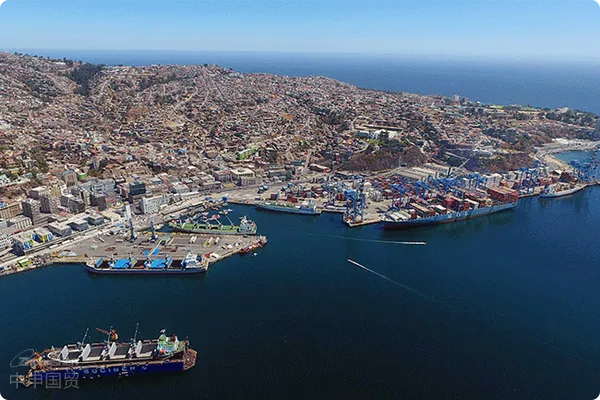- Shanghai Zhongshen International Trade Co., Ltd. - Two decades of trade agency expertise.
- Service Hotline: 139 1787 2118
Dangerous goods refer to substances or items that pose potential hazards to personal safety, public safety, and environmental safety. These goods require special safety measures during transportation, and packaging, as a critical barrier to ensure safe transportation, must meet stringent special requirements. This article introduces the inspection and supervision requirements for export dangerous goods packaging to help enterprises ensure compliance and complete international transportation successfully. Customs inspection and supervision of export dangerous goods packaging mainly include the following aspects:
Management of production enterprise codes for export dangerous goods packaging
Export dangerous goods packaging production enterprises must apply for a code from Customs. The Announcement on Adjusting the Production Enterprise Codes for Export Dangerous Goods Packaging stipulates that export dangerous goods packaging must bear the UN-marked dangerous goods packaging label, which must include the production enterprise code. The production enterprise code consists of an uppercase letter C (representing Customs) and six Arabic numerals, where the first two digits represent the code of the direct Customs authority in the enterprises region, and the last four digits (0001–9999) represent the enterprises unique number.

Performance inspection of export dangerous goods packaging
Customs adopts a combined model of periodic inspection and random sampling for the performance inspection of export dangerous goods packaging. The inspection cycle is divided into three tiers: 1, 3, and 6 months. The initial inspection cycle is 3 months, and after passing three consecutive inspection cycles, the cycle can be upgraded by one tier. If an inspection fails, the cycle is downgraded by one tier. During the inspection cycle, Customs conducts random sampling, with frequencies of once per month for the 1-month cycle, twice per 3-month cycle, and three times per 6-month cycle.
During the performance inspection cycle, dangerous goods packaging production enterprises may fill out the Application Form for Inspection of Transport Packaging for Export Goods and submit documents such as factory inspection reports and processing contracts or purchase agreements between the packaging container production enterprise and the user to the local Customs. Upon approval, Customs will issue the Inspection Result Sheet for Packaging Performance of Import and Export Goods.
Usage appraisal of export dangerous goods packaging
Export dangerous goods production enterprises must apply to the origin Customs for usage appraisal of dangerous goods packaging containers. Dangerous goods packaged in containers that have not been appraised or have failed appraisal are prohibited from export.
When applying for usage appraisal, the export dangerous goods production enterprise or its agent must submit the following documents to the origin Customs:
Inspection Result Sheet for Packaging Performance of Import and Export Goods
Factory inspection report
For the first-time use of plastic containers, composite plastic containers, or internally coated (plated) containers, a compatibility test report or self-declaration of compatibility between the packaged dangerous goods and the packaging for over 6 months must be provided.
Customs will inspect whether the packaging meets the requirements for transporting dangerous goods in accordance with relevant transportation rules, such as the International Maritime Dangerous Goods Code and the Technical Instructions for the Safe Transport of Dangerous Goods by Air. Upon passing the inspection, Customs will issue the Inspection Result Sheet for Usage Appraisal of Transport Packaging for Export Dangerous Goods, based on which the shipping department will arrange for consignment.Maritime TransportationSpecific Procedures
Code application process
Enterprises must apply to the direct Customs authority in their region. Submit relevant materials such as enterprise qualifications and production details. Customs reviews and issues the production enterprise code.
Performance inspection process
Enterprises must conduct internal testing in advance to ensure packaging compliance. Submit the Application Form for Inspection of Transport Packaging for Export Goods and related documents to Customs. Customs arranges periodic inspections and random sampling and issues the inspection result sheet.
Usage appraisal process
Use inspection process
Prepare relevant test reports and inspection reports in advance. Submit documents such as the Inspection Result Sheet for Performance of Entry-Exit Goods Packaging and factory inspection reports to the customs of origin. Customs will review and arrange on-site inspection, issuing the appraisal result sheet.
Precautions
(1) Advance Preparation:Enterprises should familiarize themselves with customs requirements in advance and prepare all necessary documents and test reports.
(2) Record Keeping:All inspection results, test reports, etc., should be properly preserved for future reference.
(3) Compliance with Regulations:Strictly adhere to international transportation rules and national regulations for packaging and declaration to avoid fines or cargo delays due to non-compliant packaging or false declarations.
The inspection and supervision of packaging for exporting dangerous goods are crucial, directly impacting transportation safety. Through strict management of manufacturer codes, performance inspections, and usage appraisals, customs can effectively oversee the quality and safety of dangerous goods packaging, ensuring smooth international transportation. Enterprises exporting dangerous goods should fully understand and comply with relevant regulations to ensure packaging compliance and avoid risks and losses from non-compliance.
Related Recommendations
? 2025. All Rights Reserved. Shanghai ICP No. 2023007705-2  PSB Record: Shanghai No.31011502009912
PSB Record: Shanghai No.31011502009912









